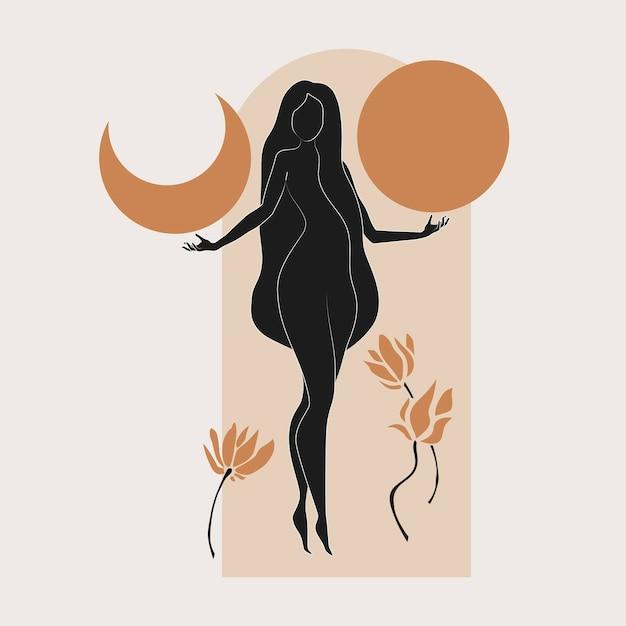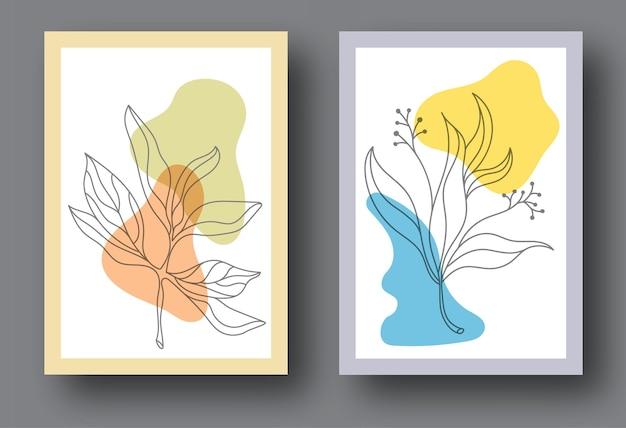Art is a dynamic expression of human creativity, encompassing a wide range of styles, mediums, and techniques. When we appreciate a work of art, we often focus on two fundamental aspects: form and content. But what do these terms really mean?
In simple terms, form refers to the physical or visual aspects of a piece of art – the colors, shapes, lines, textures, and overall composition that make it visually appealing. On the other hand, content delves into the underlying message, idea, or narrative within the artwork. It explores the themes, emotions, and concepts that the artist intends to convey.
Understanding the relationship between form and content is crucial for anyone seeking to appreciate and analyze art. This blog post will delve deeper into the concept, exploring why form is used in art, how content is explained, and how these elements contribute to the overall meaning and impact of a work of art. So let’s embark on this artistic journey together, exploring the intriguing interplay between form and content in the captivating world of art!
(Word count: 150)
What Is Form And Content In Art
Art is an expression of creativity and imagination, but have you ever stopped to think about the different elements that make up a work of art? Two important concepts in art are form and content. Understanding these concepts can help us appreciate and analyze artwork in a more meaningful way.
Unveiling the Mysteries of Form
Form in art refers to the physical characteristics of an artwork, such as its shape, structure, and materials used. It’s like the outer packaging of a gift, captivating our attention and drawing us in. Think of it as the stylish outfit that makes you take a second look at someone walking down the street.
Artists use various techniques to manipulate form, creating visual effects that engage the viewer. They can play with lines, colors, textures, and even the dimensions of the artwork. From the three-dimensional sculptures crafted from stone to the two-dimensional paintings on canvas, form is crucial in conveying the artist’s message.
Cracking the Code of Content
Now that we’ve unwrapped the captivating outer layer of a work of art, let’s dive into its content, the message or ideas that the artist wants to communicate. Content is like the secret message hidden inside an artwork, waiting to be deciphered.
Artistic content can vary greatly, ranging from political statements to personal emotions, social commentary, or even pure abstract concepts. It serves as a vessel for the artist’s thoughts, beliefs, and experiences, inviting the viewer to engage in a dialogue with the artwork. It’s like a captivating story, waiting to be unraveled and interpreted by each individual observer.
The Dynamic Dance Between Form And Content
In the world of art, form and content are inseparable dance partners. Like Fred Astaire and Ginger Rogers, they work together in perfect harmony, complementing and enhancing each other’s strengths. Form is the vessel through which content is delivered, while content gives meaning and purpose to the form.
Artists carefully choose the form to best express their chosen content. They select colors, shapes, and mediums that align with their message, creating a visually stunning and intellectually stimulating experience. Just like a chef skillfully combines ingredients to create a mouthwatering dish, artists weave form and content together to create a masterpiece.
Understanding Art on a Deeper Level
By grasping the relationship between form and content, we can appreciate artwork on a deeper level. We start to notice the intentional choices made by the artist, the symbolism embedded within the form, and the thought-provoking messages conveyed through the content.
Next time you find yourself standing in front of a captivating painting or a thought-provoking sculpture, take a moment to analyze the form and content. How do they interact with each other? What emotions or ideas do they evoke within you? Remember, art is a language of its own, and deciphering its code is an adventure worth embarking on.
So, the next time someone asks you about the form and content of a work of art, you can confidently enlighten them with your newfound knowledge. Who said art couldn’t be entertaining and educational at the same time? Happy art explorations!
Keywords: form and content in art, physical characteristics of an artwork, visual effects, message or ideas, social commentary, relationship between form and content, symbolism in form and content
FAQ: What Is Form And Content In Art
Why is form used in art
Form is used in art to give structure to the artwork and create a visual appeal. It refers to the physical aspects of the artwork, such as lines, shapes, colors, and textures. Form helps artists convey their ideas and emotions in a tangible way, allowing viewers to engage with the artwork on a sensory level.
How do you explain content
Content in art refers to the message, meaning, or ideas that the artwork conveys. It goes beyond the physical form and delves into the concepts, themes, and narratives expressed by the artist. Content can be interpreted differently by each viewer, as it often invites personal reflection and emotional connection.
What is an example of content
An example of content in art could be a painting that portrays social inequality by depicting contrasting scenes of poverty and wealth. The content of the artwork would explore the themes of economic disparity and social injustice, conveying a powerful message about the human condition.
What is the meaning of form and content
The meaning of form and content can be understood by thinking of art as a language. Form is the grammar and vocabulary that structure the artwork, while content is the message or story conveyed through that language. Form and content work together to create a complete and meaningful artistic expression.
How do you make content
Content in art is created through the artist’s imagination, personal experiences, and observations of the world. Artists often draw inspiration from various sources, such as history, culture, nature, and social issues. They use their skills and creativity to translate their ideas and emotions into visual form, allowing viewers to connect with the content on a deeper level.
What do you mean by content
In the context of art, content refers to the underlying concepts, themes, or narratives that the artist intends to communicate. It is the intellectual and emotional substance of the artwork, which can range from personal expression to social commentary.
What is form in abstract art
In abstract art, form takes on a more subjective and non-representational role. It focuses on the arrangement and organization of elements such as lines, colors, and shapes, rather than depicting recognizable objects or figures. Form in abstract art allows for creative freedom and the exploration of pure visual aesthetics.
Does form contribute to content
Yes, form plays a crucial role in conveying and enhancing the content of an artwork. The artistic choices made in terms of composition, color palette, and technique can significantly influence the viewer’s interpretation and emotional response to the content. The form acts as a vehicle to deliver the intended message of the artwork.
How and why is the content in art idea-based
The content in art is idea-based because it is rooted in the artist’s concepts, thoughts, and perspectives. Artists use their creativity and imagination to explore various ideas and translate them into visual form. Artistic content often seeks to challenge, provoke, or communicate specific messages, inviting viewers to engage with and reflect upon these ideas.
What is the difference between content, subject matter, and form
Content in art is the underlying message, meaning, or ideas conveyed by the artwork. Subject matter refers to the specific objects, scenes, or figures depicted in the artwork. Form, on the other hand, encompasses the physical aspects and organization of the artwork, such as lines, colors, and shapes. While subject matter and form contribute to the overall content, they are distinct from the content itself.
What is form in the elements of art
In the elements of art, form refers to the three-dimensional quality or the illusion of depth in an artwork. It involves the use of techniques like shading, perspective, and modeling to create a sense of volume and spatial relationships within the artwork.
What is an art form example
An art form example could be painting, sculpture, photography, dance, music, or theater. Each of these forms provides a unique medium through which artists can express their creativity and engage with audiences.
Why do we differentiate between form and content in a movie, and how are they relevant to one another
In a movie, form refers to the audiovisual elements such as cinematography, editing, sound design, and visual effects. Content, on the other hand, encompasses the storyline, characters, and underlying themes of the film. While form and content are distinct, they are closely intertwined. The form of a movie helps shape the viewer’s experience and perception of the content, enhancing its impact and emotional resonance.
What is the form of art called
The form of art is called the medium. It refers to the specific materials, techniques, or processes used by artists to create their artwork. Examples of art mediums include oil painting, sculpture, digital art, printmaking, and ceramics.
What does form mean in art
In art, form refers to the physical aspects and composition of an artwork. It includes elements such as lines, shapes, colors, textures, and space. Form gives structure and visual appeal to the artwork, allowing viewers to engage with it on a sensory level.
What is form and style in art
Form in art refers to the physical aspects and composition of an artwork, while style refers to the distinctive manner in which an artist expresses themselves. Style encompasses the artist’s unique techniques, aesthetic choices, and personal artistic voice. Form and style work together to create the overall visual and conceptual language of the artwork.
What is made up of form and content
An artwork is made up of both form and content. The form includes the physical aspects, composition, and visual elements, whereas the content encompasses the underlying message, meaning, or ideas conveyed by the artwork. Together, form and content create a complete artistic expression.
What is content in art
In art, content refers to the message, meaning, or ideas that the artwork conveys. It goes beyond the physical form and delves into the concepts, themes, and narratives expressed by the artist. Content invites viewers to engage with the artwork intellectually and emotionally, encouraging personal reflection and interpretation.
How is form created in art
Form in art is created through various artistic techniques, such as drawing, painting, sculpting, or digital manipulation. Artists use lines, shapes, colors, textures, and other elements to organize and structure the visual composition. Form can also be enhanced through the use of perspective, shading, and three-dimensional techniques.
Which is more important, content or form
Both content and form are essential in art and contribute to the overall artistic experience. The content provides the intellectual and emotional substance of the artwork, while the form gives it structure, visual appeal, and sensory engagement. The importance of content or form may vary depending on the artist’s intent and the viewer’s interpretation.
What is form in art appreciation
In art appreciation, form refers to the physical aspects and visual elements of an artwork. It involves analyzing how lines, shapes, colors, textures, and other visual components are used to create a coherent and visually engaging composition. Understanding form helps viewers appreciate the artist’s choices and the impact they have on the artwork’s overall aesthetic and meaning.
How are form and content related
Form and content are closely related in art, as they work together to create a complete artistic expression. The form gives structure, visual appeal, and sensory engagement to the artwork, while the content provides the underlying concepts, themes, or messages. Form and content interact to shape the viewer’s interpretation and emotional response, making them integral components of the artistic experience.

